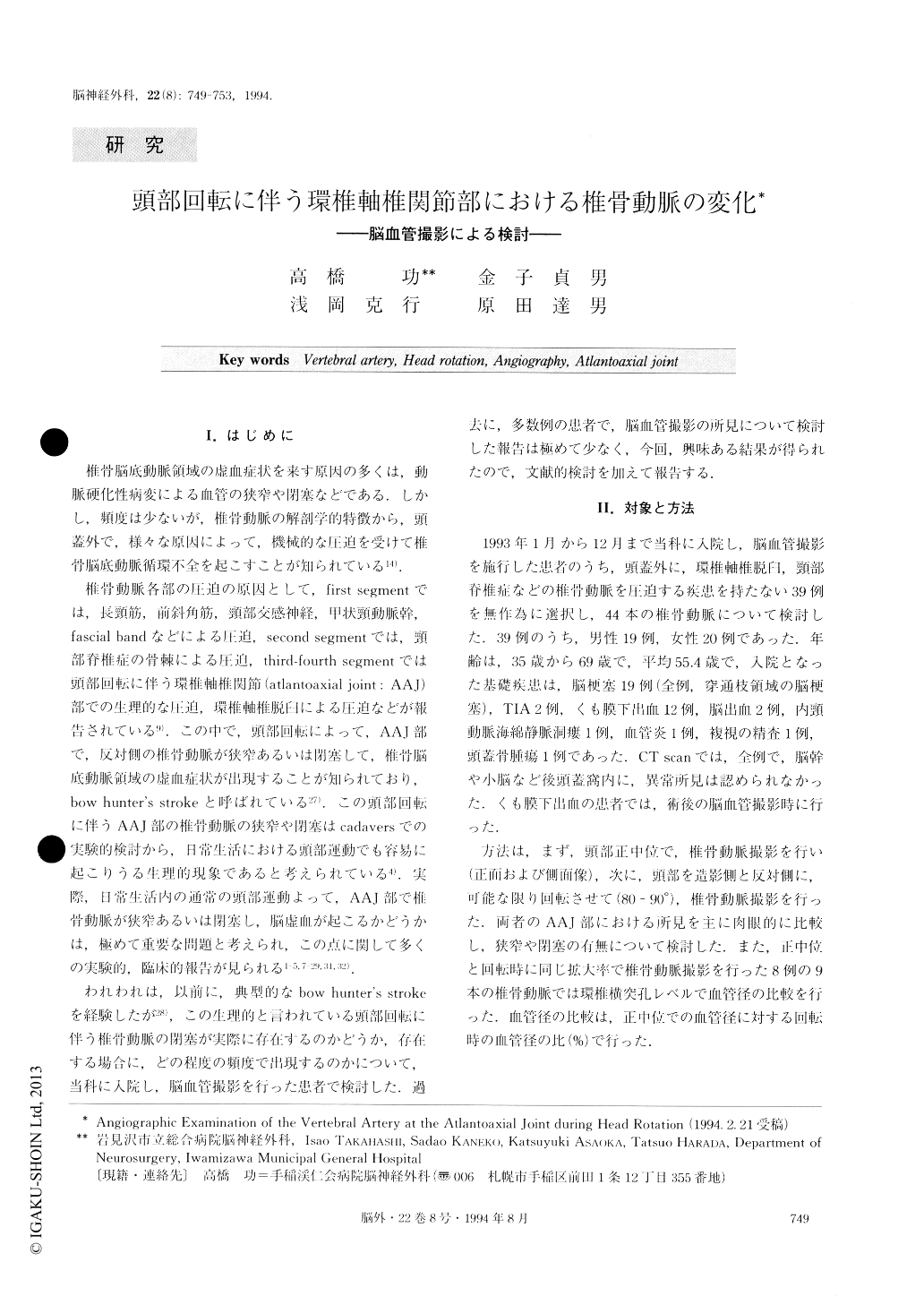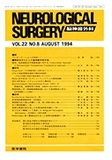Japanese
English
- 有料閲覧
- Abstract 文献概要
- 1ページ目 Look Inside
I.はじめに
椎骨脳底動脈領域の虚血症状を来す原因の多くは,動脈硬化性病変による血管の狭窄や閉塞などである.しかし,頻度は少ないが,椎骨動脈の解剖学的特徴から,頭蓋外で,様々な原因によって,機械的な圧迫を受けて椎骨脳底動脈循環不全を起こすことが知られている14).
椎骨動脈各部の圧迫の原因として,first segmentでは,長頸筋,前斜角筋,頸部交感神経,甲状頸動脈幹,fascial bandなどによる圧迫,second segmentでは,頸部脊椎症の骨棘による圧迫,third-fourth segmentでは頭部回転に伴う環椎軸椎関節(atlantoaxial joint:AAJ)部での生理的な圧迫,環椎軸椎脱臼による圧迫などが報告されている9).この中で,頭部回転によって,AAJ部で,反対側の椎骨動脈が狭窄あるいは閉塞して,椎骨脳底動脈領域の虚血症状が出現することが知られており,bow hunter's strokeと呼ばれている27).この頭部回転に伴うAAJ部の椎骨動脈の狭窄や閉塞はcadaversでの実験的検討から,日常生活における頭部運動でも容易に起こりうる生理的現象であると考えられている4).実祭,日常生活内の通常の頭部運動よって,AAJ部で椎骨動脈が狭窄あるいは閉塞し,脳虚血が起こるかどうかは,極めて重要な問題と考えられ,この点に関して多くの実験的,臨床的報告が見られる1-5,7-29,31,32).
Stenosis or occlusion of the vertebral artery at the atlantoaxial joint associated with head rotation is gener-ally considered an uncommon cause of vertebrobasilar insufficiency. This rotational contralateral (to the face) vertebral artery occlusion is considered to be a “phy-siological phenomenon”. The purpose of the present article is to investigate whether stenosis or occlusion of the vertebral artery at the atlantoaxial joint really occurs with head rotation.
The authors performed vertebral angiography both in the neutral position and with contralateral rotation of the head (about 80-90 degrees) on 39 patients (44 ver-tebral arteries), who didn't have any disease of the cer-vical region or of the posterior cranial fossa. The au-thors discussed the angiographic findings concerning the vertebral artery at the atlantoaxial joint during con-tralateral rotation of the head.
In some cases a vertebral artery was stretched with head rotation. However occlusion or stenosis of the ver-tebral artery was never found to occur at the atlantoax-ial joint level in any of the cases. This result indicates that rotational vertebral artery occlusion is not a “phy-siological phenomenon”. There may be many other de-velopmental and degenerative factors contributing to this rotational occlusion, such as atherosclerosis, kink-ing, and tortuosity of the vertebral artery, hyperos-teosis, tightness of the paravertebral muscle, stenosis of transverse foramen and the depth of the vascular groove of the atlas.

Copyright © 1994, Igaku-Shoin Ltd. All rights reserved.


